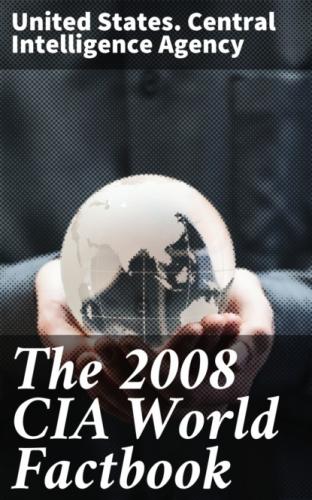Radio broadcast stations:
AM 9, FM 16, shortwave 1 (2006)
Radios:
850,000 (1997)
Television broadcast stations:
48 (private television stations alongside 2 public networks; major Russian channels widely available) (2006)
Televisions:
825,000 (1997)
Internet country code:
.am
Internet hosts:
26,081 (2008)
Internet Service Providers (ISPs):
9 (2001)
Internet users:
172,800 (2006)
Transportation
Armenia
Airports:
12 (2007)
Airports - with paved runways:
total: 10 over 3,047 m: 2 2,438 to 3,047 m: 2 1,524 to 2,437 m: 4 914 to 1,523 m: 2 (2007)
Airports - with unpaved runways:
total: 2 1,524 to 2,437 m: 1 914 to 1,523 m: 1 (2007)
Pipelines:
gas 2,036 km (2007)
Railways:
total: 839 km broad gauge: 839 km 1.520-m gauge (828 km electrified) note: some lines are out of service (2006)
Roadways:
total: 7,700 km paved: 7,700 km (includes 1,561 km of expressways) (2006)
Military
Armenia
Military branches:
Armed Forces: Ground Forces, Nagorno-Karabakh Self Defense Force
(NKSDF), Air Force and Air Defense (2008)
Military service age and obligation:
18–27 years of age for voluntary or compulsory military service; 2-year conscript service obligation (2007)
Manpower available for military service:
males age 16–49: 809,576 females age 16–49: 870,864 (2008 est.)
Manpower fit for military service:
males age 16–49: 637,776 females age 16–49: 729,846 (2008 est.)
Manpower reaching militarily significant age annually:
male: 30,548 female: 29,170 (2008 est.)
Military expenditures:
6.5% of GDP (FY01)
Transnational Issues
Armenia
Disputes - international:
Armenia supports ethnic Armenian secessionists in Nagorno-Karabakh and since the early 1990s, has militarily occupied 16% of Azerbaijan - Organization for Security and Cooperation in Europe (OSCE) continues to mediate dispute; over 800,000 mostly ethnic Azerbaijanis were driven from the occupied lands and Armenia; about 230,000 ethnic Armenians were driven from their homes in Azerbaijan into Armenia and Nagorno-Karabakh; Azerbaijan seeks transit route through Armenia to connect to Naxcivan exclave; border with Turkey remains closed over Nagorno-Karabakh dispute; ethnic Armenian groups in Javakheti region of Georgia seek greater autonomy; Armenians continue to emigrate, primarily to Russia, seeking employment
Refugees and internally displaced persons:
refugees (country of origin): 113,295 (Azerbaijan) IDPs: 8,400 (conflict with Azerbaijan over Nagorno-Karabakh, majority have returned home since 1994 ceasefire) (2007)
Trafficking in persons:
current situation: Armenia is primarily a source country for women and girls trafficked to the UAE and Turkey for the purpose of commercial sexual exploitation; Armenian men and women are trafficked to Turkey and Russia for the purpose of forced labor tier rating: Tier 2 Watch List - Armenia is placed on the Tier 2 Watch List for a fourth consecutive year; its efforts to increase compliance with the minimum standards were assessed based on its commitments to undertake future actions, particularly in the areas of improving victim protection and assistance; while the government elevated anti-trafficking responsibilities to the ministerial level, adopted a new National Action Plan, and drafted a National Referral Mechanism, it has yet to show tangible progress in identifying and protecting victims or in tackling trafficking complicity of government officials; the Armenian Government made some notable improvements in its anti-trafficking law enforcement efforts, but it failed to demonstrate evidence of investigations, prosecutions, convictions, and sentences of officials complicit in trafficking (2008)
Illicit drugs:
illicit cultivation of small amount of cannabis for domestic consumption; minor transit point for illicit drugs - mostly opium and hashish - moving from Southwest Asia to Russia and to a lesser extent the rest of Europe
This page was last updated on 18 December, 2008
======================================================================
@Aruba
Introduction
Aruba
Background:
Discovered and claimed for Spain in 1499, Aruba was acquired by the Dutch in 1636. The island's economy has been dominated by three main industries. A 19th century gold rush was followed by prosperity brought on by the opening in 1924 of an oil refinery. The last decades of the 20th century saw a boom in the tourism industry. Aruba seceded from the Netherlands Antilles in 1986 and became a separate, autonomous member of the Kingdom of the Netherlands. Movement toward full independence was halted at Aruba's request in 1990.
Geography
Aruba
Location:
Caribbean, island in the Caribbean Sea, north of Venezuela
Geographic coordinates:
12 30 N, 69 58 W
Map references:
Central America and the Caribbean
Area:
total: 193 sq km land: 193 sq km water: 0 sq km
Area - comparative:
slightly larger than Washington, DC
Land boundaries:
0 km
Coastline:
68.5 km
Maritime claims:
territorial sea: 12 nm
Climate:
tropical marine; little seasonal temperature variation
Terrain:
flat with a few hills; scant vegetation
Elevation extremes:
lowest point: Caribbean Sea 0 m highest point: Mount Jamanota 188 m
Natural resources:
NEGL; white sandy beaches
Land use:
arable land: 10.53% permanent crops: 0% other: 89.47% (2005)
Irrigated land:
0.01 sq km (1998 est.)
